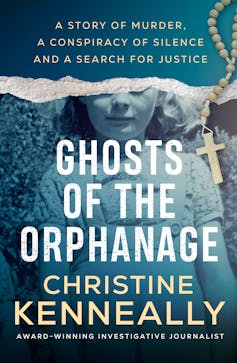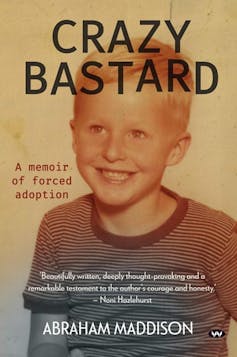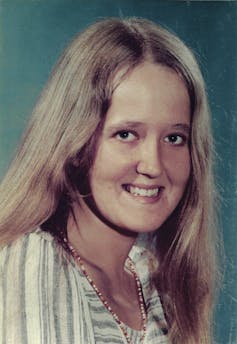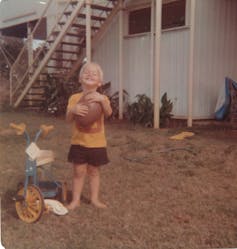Recent publicity about the continuing abuse of children in out-of-home care may be a source of shame for Australians, but it does not come as a surprise.
A series of inquiries at both state and Commonwealth level over the last quarter century exposed such “care” as inherently abusive. The inquiries also detailed the lengths to which the governing institutions were prepared to go to deny this reality.
Review: Ghosts of the Orphanage – Christine Kenneally (Hachette); Crazy Bastard – Abraham Maddison (Wakefield Press)
The United States has resisted the “age of inquiry” that has swept across much of the western world, leaving former orphanage residents to pursue their cases through the courts as individuals.
It is this struggle that forms the core of journalist Christine Kenneally’s latest book, Ghosts of the Orphanage. Her focus is on St Joseph’s Orphanage in Burlington, Vermont, where generations of children were under the control of untrained and often cruel nuns, and a series of paedophilic priests.

A reunion in 1994 provided the opportunity for former residents to share their memories of cruel and sometimes bizarre punishments. They engaged a lawyer and were able to show commonalities across these memories. But they were forced to pursue redress as individuals at a time when the community was disinclined to believe that the church would lie. Most settled out of court.
The reputation of the Catholic Church has since been damaged by clerical sexual abuse scandals across the world, which have raised awareness of the lengths to which the Church has been prepared to go to keep its secrets.
Kenneally’s book thus addresses a more sympathetic audience than survivors faced in the past. She has also uncovered material that was not available at the time of the original cases. This new evidence has allowed her to validate the survivors’ memories and document systematic failures, not only within St Joseph’s Orphanage, but in similar institutions within and beyond the United States.
The most concerning of the scandals Kenneally has uncovered involves the persistent rumours that some institutionalised children died as a result of their abuse and that their deaths were covered up: these children are the “ghosts of the orphanage”.
Similar rumours have circulated wherever children have been kept in closed institutions beyond the public gaze. And children did often disappear from such institutions. They were returned to their families or taken to hospitals or assigned alternative placements, without any explanation being offered to their fellow residents.
Children also died in care from illness, accident or neglect, and were buried without ceremony in the unmarked plots which, until recently, institutions maintained at local cemeteries.
Such deaths were rarely investigated. In the few cases where an allegation that the death was a result of abuse proceeded to trial, the sympathy of the courts tended to lie with the orphanage authorities, rather than with the children.
In Australia, there are some notable historical examples of abuses that became public. In 1896, the Brisbane Courier reported that an Aboriginal child named Casey was beaten to death at Queensland’s Myora Mission by the matron, who was charged with manslaughter. In 1911, George Jones died from neglect at Western Australia’s Swan Orphanage. In 1933, the Age reported that Rex Simpson died from unrecognised tetanus at Victoria’s Seaside Garden Home for Boys.
Yet these publicised cases are rare exceptions in a environment in which institutional deaths were widely ignored. Surrounded by such silences, it is not surprising that rumours of unmarked graves abound among survivor communities, including in Australia.
Investigations around institutions such as Bindoon in Western Australia and Ballarat Orphanage have so far failed to validate such stories. But the shocking disclosures from Ireland’s Tuam Mother and Babies Home, and the Canadian Residential Schools have added credibility to the unofficial accounts.
Kenneally’s investigation of similar allegations from St Joseph’s adds fuel to the fire. Her account goes beyond accepted stories of abuse to examine deaths in Tuam, Smyllum Park, Kamloops, and other institutions in Canada and the United States. She contrasts survivors’ memories with public accounts of orphanage operations, while acknowledging the distorting influence of trauma on memory and the perils of cross examination.
Her book exposes orphanages as hidden places which keep their secrets. Their residents effectively became citizens of a separate realm, irrespective of where the orphanage was located, part of an abusive system Kenneally describes as “an invisible archipelago”.

The promotion of adoption
The promotion of adoption, particularly in the postwar era, would suggest that the negative aspects of orphanages were not unknown. Authorities assumed that single mothers would not be able to provide for their children, so they advanced a clean break theory. Adoption at birth, it was argued, would prevent children from “languishing” in orphanages when their mothers were forced to surrender them later in life.
In Crazy Bastard, journalist and adoptee Derek Pedley, writing under his birth name Abraham Maddison, sets out to show that this assumption was fraught. He sees his life as broken by his forced adoption.
Following the primal wound theory expounded by Nancy Verrier, Maddison views his adoption as the major explanation for the dysfunction that followed his discovery of his adopted status at 15. When a reunion with his mother – Joye Maddison – and her wider family failed due to his disruptive behaviour, exacerbated by his alcohol abuse and mental health issues, he interpreted this as a second abandonment.

But a letter written by his mother at the time of his birth, but not given to Maddison until after her death, overturns this narrative of multiple abandonment. He also gains access to his mother’s diaries, which document her struggles over relinquishing her child and her continuing concern for his fate throughout the years when access to him was denied.
These documents lead Maddison to reevaluate their relationship. In Crazy Bastard, he reviews his life, interweaving his personal story with psychological insights, his recollections augmented by this mother’s writings and discussion with friends. He concludes that he and his mother were both victims.
Another crucial element in Maddison’s reevaluation is the evidence that emerged from the Senate Inquiry into Former Forced Adoptions. Here Maddison was able to hear the voices of many women whose lives were also shaped, and harmed, by the practice of forced adoption. His own experiences were validated.
Crazy Bastard is the story of Maddison rebuilding his life. It is a valuable addition to the growing list of adoption memoirs that disrupt the happy-ever-after narrative on which the practice was based.
By locating his experiences within this wider narrative, Maddison has been able to move beyond the dysfunction that marred his past. Part of his rebuilding process has also involved a reunion with his father’s family – a reunion far less troubled than his original contact with his mother.
Voices of survivors

Ghosts of the Orphanage and Crazy Bastard address child welfare practices of the past, but they have continuing relevance for the present. As the recently opened Australian Orphanage Museum shows us, the legacy of such practices lives on for the survivors, whose adult experiences have been shaped by the disruptions of their childhood.
We need to continue to listen to the voices of these survivors. Their voices provide a valuable counterbalance to politicians and experts who seek to impose simplistic solutions to the complex problems in child protection that continue to face society today.
Shurlee Swain receives funding from the Australian Research Council and the Department of Social Services.
This article was originally published on The Conversation. Read the original article.







